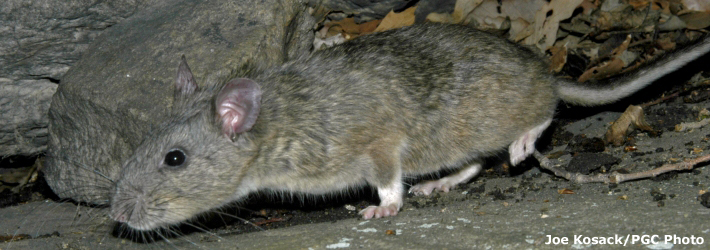Important Mammal Areas Project overview
The Pennsylvania Important Mammal Areas Project was initiated in 2001 to promote the conservation of mammals by identifying sites or regions that include habitats critical to their survival, and to educate the public about mammals and their needs. The Project was the first of its kind in the United States and perhaps in the world. Patterned after the Important Bird Areas Project, the philosophy and methodologies are comparable. While selection as an Important Mammal Area does not provide legal protection, it focuses public awareness on mammals and provides landowners and governmental agencies with information to compliment land management and land use decisions to better protect mammals and their habitat. This project is a joint partnership of the Pennsylvania Game Commission, National Wildlife Federation, Pennsylvania Wildlife Federation, Pennsylvania Federation of Sportsmen's Clubs, Mammal Technical Committee/Pennsylvania Biological Survey and the Carnegie Museum of Natural History. Financial support has come primarily through the State Wildlife Grants Program, a federally-funded program administered in Pennsylvania by the game Commission.
The criteria used to determine whether a site qualifies as an Important Mammal Area were developed by the Mammal Technical Committee of the Pennsylvania Biological Survey. Sites were chosen on the basis of meeting at least one of the following attributes, although many sites were nominated in more than one category.
Category 1
These sites contain habitats that support diverse or unique mammal communities. The sites include a habitat type that either: 1.) Supports significant populations of species or subspecies with specific habitat requirements, or 2.) Is representative, rare, threatened, or unique.
Category 2
These sites contain habitats that support high density mammal populations. The sites include a habitat type that 1.) Supports significant aggregations of mammals during one or more seasons, or 2.) Supports important core populations or population segments.
Category 3
These sites support species or subspecies listed as endangered or threatened by the Pennsylvania Bio-logical Survey. 1.) The site supports a confirmed viable local population, or 2.) The species or subspecies regularly occurs at the site during one or more seasons.
Category 4
These sites support species or subspecies that are declining or vulnerable nationally or listed as candi-date species by the Pennsylvania Biological Survey (specifically candidate-proposed, candidate-at risk, candidate-rare). 1. The site sustains a confirmed viable local population, or 2. The species or subspecies regularly occurs at the site during one or more seasons.
Category 5
These sites are important for wildlife viewing and public education. 1.) The site includes wild populations of mammals that can be viewed in their natural habitat, or 2.) The site is a natural area associated with an established educational program that interprets natural history of resident mammals.
Important Mammal Areas Maps
All links below are PDFs.
